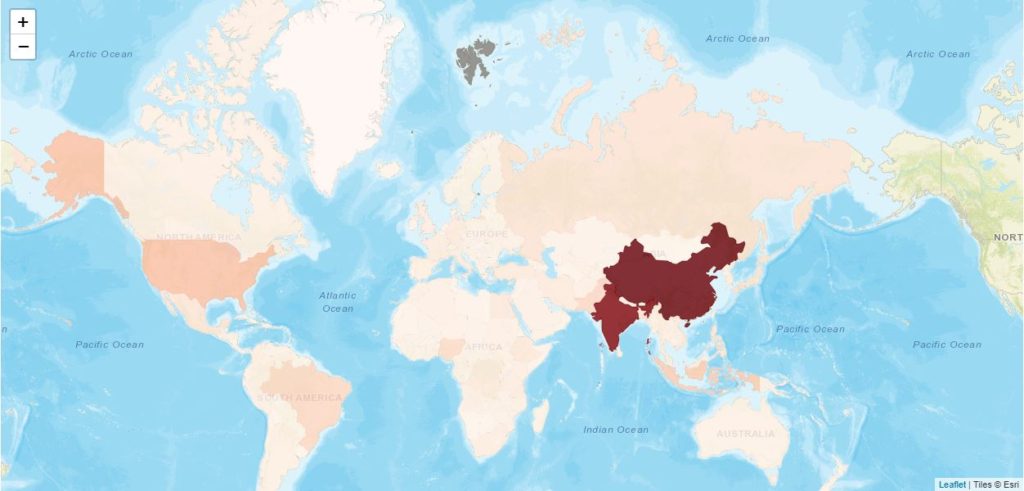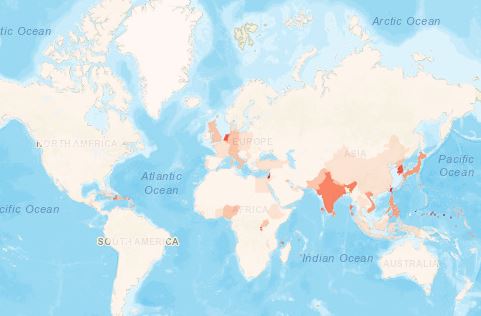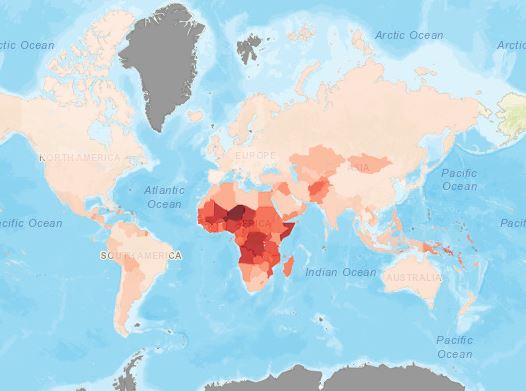
There is much debate around world population, fertility and wealth distribution. People often see what they want to see and choose to ignore what they don’t like. People are selective and don’t always look at the full data available.
I thought it would be a nice idea to graphically look at various measures for population and wealth across the world. Later I will also look at consumption and pollution or greenhouse emissions.
The first chart is probably the most obvious. Most of us know that China and India have the largest populations in the world. But sometimes we forget that these are two of the largest countries in the world. They have a huge amount of land.
Perhaps population density is a more suitable metric.

China falls significantly but still is quite high. For the purposes of the chart above I have removed those countries with densities/km of over 1000. Why? Because city states like Monaco and Macao have very high densities, due to being small and highly populated but also due to large numbers of people who claim residence there for the tax breaks they can avail of.

Bangladesh is the first of the larger countries to make an appearance.
But looking above, we also see that as well as South-East Asia, most of Europe is also densely populated. Parts of Africa are densely populated but as a continent, vast parts of it are empty. There is a huge amount of land in Africa and not that many people to fill it.

The map above shows something that worries a lot of people. In most of the world, fertility rates have dropped massively. Much of Western Europe sees fertility rates below 2.1 which is considered about replacement level. The implementation of the 1-child policy(now revised to 2) in China saw it’s fertility rate drop radically. To the extent that the Chinese government worries both about a dropping population(in future) and a predominance of men over women(due to gender-selective abortion). There are worries here for an aging population, unable to be supported by the younger section of the population, and social problems brought about so many men who cannot find women to marry. “In 2016 there were 33.59 million more men than women.“
In Europe, states such as Italy are driven to pay people to move into areas with declining populations. In Japan older people are turning to robots for both care and company.
While governments are worried about the economic and social effects of declining populations and possible effects of migration, it must be strongly argued that a reduction in the human population is good for all other life on the planet. It is good for the continued existence of humanity on this planet and the planet itself as a living entity. While the shifting demographics give rise to certain challenges, these are as nothing compared to the challenges presented if we kill off most other species of life, plant and animal, and encourage an increasingly erratic and hostile climate.
World Population Statistics
United Nations Population Division estimates
https://www.worldometers.info/world-population/population-by-country/
Italian region will pay you to move in
Irish Times
http://www.irishtimes.com/life-and-style/homes-and-property/fancy-an-easyish-25-000-this-italian-region-will-pay-you-to-move-in-1.4016095
Robots as companions
Dateline
https://www.sbs.com.au/news/dateline/love-intimacy-and-companionship-a-tale-of-robots-in-japan
China’s One-Child Policy
Britannica
https://www.britannica.com/story/the-effects-of-chinas-one-child-policy
